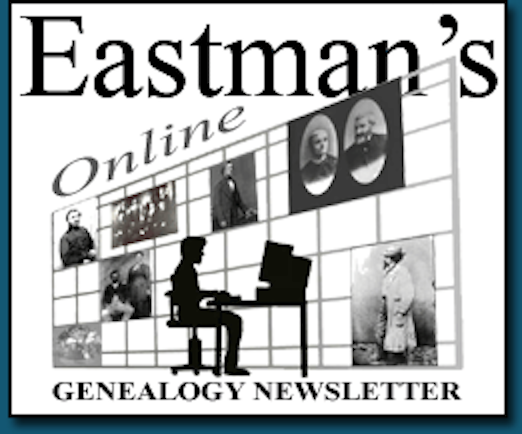This has to be one of the niftiest new products available from MyHeritage (the sponsor of this newsletter). I have experimented with this for a bit and fell in love with it immediately!
Here is the announcement from MyHeritage:
(You can also read more and see examples in the MyHeritage Blog at: https://blog.myheritage.com/2022/11/introducing-ai-time-machine-transform-yourself-into-a-historical-figure-using-everyday-photos/):
TEL AVIV, Israel & LEHI, Utah--MyHeritage, the leading global service for discovering your past and empowering your future, announced today the release of AI Time Machine™, a cutting-edge, fun feature that creates images of a person in different time periods throughout history using text-to-image AI technology. The stunning, hyper-realistic results can easily be shared on social media and used as profile photos to amaze friends and family.
AI Time Machine™ is based on Stable Diffusion and technology licensed by MyHeritage from Astria, an innovative company specializing in tailor-made AI image generation. The feature is very easy to use: simply upload 10 to 25 photos of the same individual taken in a variety of settings and poses. A model of the individual is then created and cast as a protagonist in dozens of predefined themes set in different historical eras. With only a few clicks anyone can see themselves as an ancient Greek warrior, an Egyptian pharaoh, a medieval knight, a Victorian lady, a hippie from the 1960’s, or an astronaut in space. Images can be downloaded as a set of 8 or individually, for easy sharing.
“At MyHeritage, we’re constantly developing cool new ways to connect people to their family history,” said Gilad Japhet, Founder and CEO of MyHeritage. “Over the past 3 years we released many successful features that use the power of AI to bring historical photos to life. AI Time Machine™ is a new twist on this theme, inviting you to travel to the past and see yourself as you might have looked at the time of your ancestors. While developing this feature, the recurring question among our team was when it would be released so we could finally share our own mind-blowing images!”
“We are delighted to collaborate with MyHeritage to apply our technology to the field of family history,” said Alon Burg, Co-founder and CEO of Astria. “Generative AI is an exhilarating new frontier, and we’re very excited that this integration will create fun and meaningful experiences for millions of people worldwide.”
AI Time Machine™ is the latest addition to the suite of cutting-edge photo technologies that have positioned MyHeritage as the market leader for improving old family photos. The company’s suite of photo features includes Deep Nostalgia™, which animates the faces in still photos and took the world by storm, catapulting MyHeritage to the top of the app store charts in dozens of countries; Photo Repair, which automatically fixes scratches and creases; MyHeritage Photo Enhancer, which brings blurry faces into focus; MyHeritage In Color™, which automatically colorizes black and white photos and restores the colors in faded photos; and DeepStory, which makes your family photos speak. Collectively, these features have been used more than 200 million times since their release. MyHeritage’s photo features resonate deeply with consumers, increase interest in history in general and family history in particular, and introduce new audiences to the fascinating domain of genealogy.
While highly realistic, images generated by AI Time Machine™ are created by artificial intelligence; they are not authentic photographs. As per MyHeritage’s commitment to responsible AI, watermarks are added to all images generated by AI to distinguish them from authentic photos. AI Time Machine™ images are perfect for sharing on Facebook, Instagram, Twitter, WhatsApp, and other social media.
AI Time Machine™ is currently available on desktop and via mobile web browser. The feature is free at launch for a limited introductory period (with a limit of one model and 50 themes per user, for a total of 400 images), following which it will become a paid feature. A one-time purchase will then allow you to upload photos to create a model of one person and generate 160 images with up to 20 themes. Users with a MyHeritage Complete plan will enjoy a higher usage quota at no additional cost.
Try AI Time Machine™ now at myheritage.com/ai-time-machine.
Watch the demo video of AI Time Machine™.
About MyHeritage
MyHeritage is the leading global discovery platform for family history. With billions of historical records and family tree profiles, and with sophisticated matching technologies that work across all its assets, MyHeritage allows users to discover their past and empower their future. MyHeritage DNA is one of the world’s largest consumer DNA databases, with 6.3 million customers. MyHeritage is the most popular DNA test and family history service in Europe, and is trusted by 104 million users worldwide. Since 2020, MyHeritage is home to the world’s most advanced AI technologies for animating, repairing, enhancing, and colorizing historical photos. www.myheritage.com
 Latest News Articles
Latest News Articles If you do not see a Plus Sign that is labeled "Add comment," you will need to upgrade to either a (FREE) Standard Edition or a (paid) Plus Edition subscription
If you do not see a Plus Sign that is labeled "Add comment," you will need to upgrade to either a (FREE) Standard Edition or a (paid) Plus Edition subscription